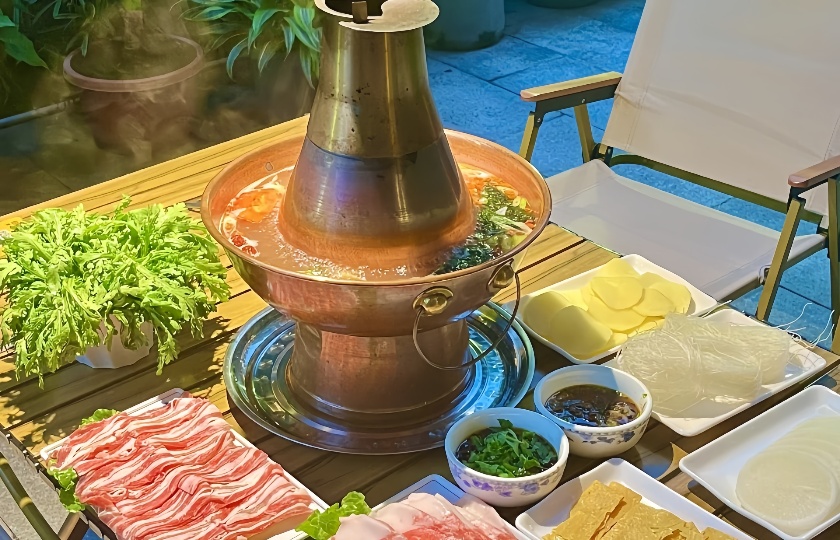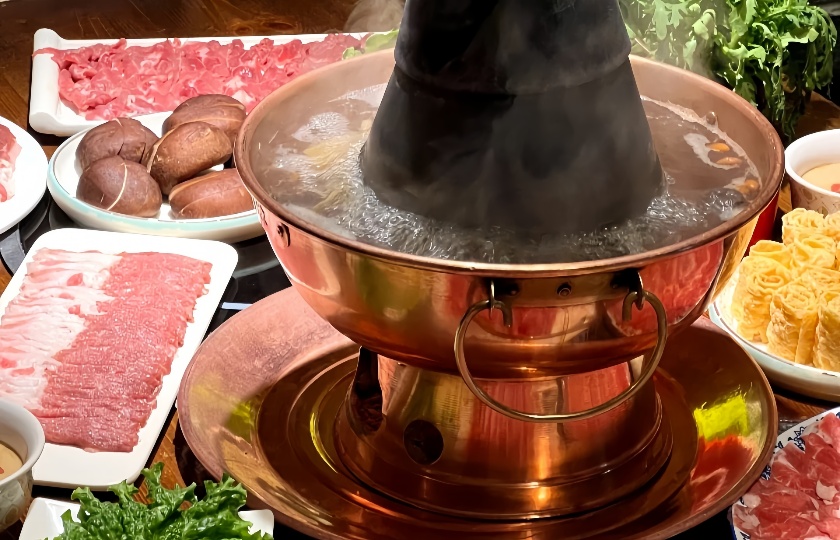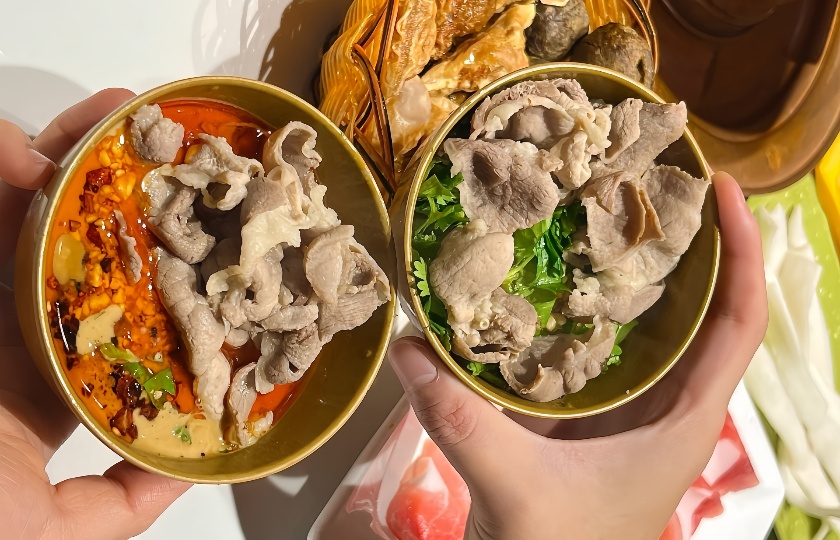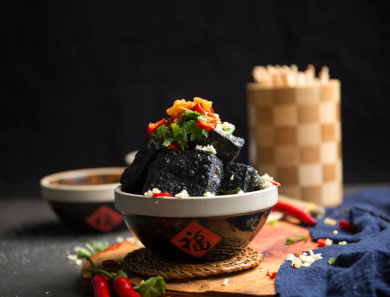The Gastronomic Duel: What Is Shabu vs Chinese Hotpot?

I’m a huge hot pot enthusiast, completely in love with it. Once, I visited a friend’s house, and they promised to treat me to hot pot. I was super excited, but when it was served, it was quite different from what I usually have.
Differences Between Shabu-shabu and Chinese Hot Pot?
Broth
Shabu-shabu: The broth is typically light and clear. For example, in traditional Beijing-style Shabu-shabu, the broth is a simple clear soup with just ginger, scallions, and goji berries. This type of broth is designed to highlight the natural flavors of the ingredients, allowing diners to savor the true taste of the food.
Chinese Hot Pot: The variety of broths is extensive. A classic example is the Sichuan spicy hot pot, which features a beef tallow base loaded with chilies and Sichuan peppercorns, creating a numbing and spicy sensation. There are also tomato-based broths, which are tangy and sweet, perfect for vegetables and meatballs, and mushroom broths, which are rich and umami-packed from a variety of mushrooms.
Ingredient Selection
Shabu-shabu: Focuses more on meats, particularly lamb. In Beijing-style Shabu-shabu, thin slices of lamb are quickly swished in the clear broth until just cooked, then dipped in a sesame sauce. While vegetables, tofu, and other items are available, meat is the star of the show.
Chinese Hot Pot: Offers a broader range of ingredients. Besides various meats, Sichuan hot pot is famous for items like tripe, duck intestines, and beef aorta, which are cooked to a perfect crunchy texture in the spicy broth. There’s also a wide array of meatballs, tofu products, vegetables, and mushrooms, catering to diverse tastes.
Dipping Sauces
Shabu-shabu: Primarily uses a sesame sauce. This thick, rich sauce made from ground sesame seeds often includes additions like fermented tofu and chive flowers, enhancing the flavor of the lamb and other ingredients.
Chinese Hot Pot: Dipping sauces vary by region and personal preference. In Sichuan hot pot, a common choice is a sesame oil dip, which helps to mitigate the spiciness and can be mixed with minced garlic, cilantro, and scallions. In Chaozhou beef hot pot, the preferred sauce is satay sauce, a blend of sweet, spicy, salty, and savory flavors that pairs perfectly with the beef.
Why is shabu shabu so good?
1. Simple Broth, Pure Flavors
As a food enthusiast, traveler, and recipe sharer, I know that great food often doesn’t need overly complex seasonings. Shabu-shabu’s broth is typically a clear soup, made with just a few simple ingredients like ginger, scallions, and goji berries. This seemingly plain combination allows the natural flavors of the ingredients to shine through. When you dip paper-thin slices of lamb into the clear broth, the pure soup base locks in the meat’s freshness without overwhelming it with too many spices. You get to taste the lamb in its most authentic form, bringing you back to the essence of the food.
2. High-Quality Ingredients, Exceptional Taste
The quality of ingredients is crucial in Shabu-shabu. The lamb slices are cut incredibly thin, with beautiful marbling that looks like a work of art. These thin slices cook instantly in the broth, becoming tender and juicy with no gaminess. This not only showcases the chef’s knife skills but also reflects the meticulous selection of ingredients. Only the finest lamb can deliver such an exquisite taste in Shabu-shabu.
3. Traditional Utensils, Enhanced Atmosphere
The unique copper pot and charcoal fire are also key features of Shabu-shabu. Copper pots have excellent heat conductivity, ensuring even heating and stable temperatures. The charcoal fire in the center adds warmth and a touch of romance to the dining experience. This traditional cooking method allows you to enjoy not just the food, but also the historical and cultural heritage behind it.
4. Rich Culture, Diverse Variations
From a culinary cultural perspective, Shabu-shabu represents a refined and elegant way of dining. Different regions have their own variations of Shabu-shabu. Some places add special spices to the broth, giving it a unique flavor, while others offer different dipping sauces so diners can customize their taste. These diverse variations make Shabu-shabu even more captivating.
In summary, Shabu-shabu’s deliciousness lies in its simplicity, elegance, quality, and cultural depth. It’s not just a dish, but a lifestyle and a pursuit of culinary excellence. You must try it; I believe you’ll be enchanted by its charm!

Why do Chinese love hot pots?
During my travels, I deeply felt the Chinese people's passion for hot pot. Here are the reasons why:
1. Diverse Flavor Options
Regional Varieties: China’s vast geography means different regions have their own unique hot pot flavors.
Sichuan Hot Pot: Famous for its spicy and numbing taste, with a red, beef tallow-based broth rich with chilies and Sichuan peppercorns. Ingredients like tripe and duck intestines are cooked quickly, absorbing the flavorful broth for a mouth-numbing experience.
Beijing Lamb Hot Pot: Uses a clear broth to highlight the freshness of lamb, often dipped in a rich sesame sauce, offering a different, yet equally delightful taste.
Chaoshan Beef Hot Pot: Known for its meticulous division of beef cuts, providing various textures and flavors to satisfy diverse palates.
2. Lively Social Atmosphere
Perfect for Gatherings: Hot pot is an ideal social meal. Friends and family gather around a steaming pot, chatting and cooking together, creating a joyful and interactive dining experience.
Bonding: In the hustle and bustle of daily life, hot pot serves as a reason for people to come together, strengthening bonds and creating lasting memories. Everyone can choose their favorite ingredients, sharing the joy of a communal meal.
3. Cultural Heritage and Emotional Significance
Historical Roots: Hot pot has a long history in China, carrying rich cultural significance. It’s more than just food; it’s a symbol of family reunion and happiness.
Emotional Connection: Eating hot pot as a family represents unity and joy. It’s an integral part of Chinese culinary culture, reflecting the Chinese people’s love and pursuit of good food.
4. Versatility for Different Occasions
Adaptable Dining: Hot pot can be enjoyed in upscale restaurants or casual street-side eateries. It’s suitable for various occasions, from family gatherings and friends’ get-togethers to business dinners.
Affordable: Hot pot is relatively affordable, making it accessible to everyone.

What to avoid at Hotpot?
1. Avoid Excessive Spiciness
Sensitive Stomachs: For those with sensitive stomachs, consuming overly spicy food can lead to discomfort, such as stomach pain or diarrhea. It’s important to choose the spice level of the broth according to your own tolerance and health condition.
2. Avoid Overcooking Food
Texture and Health: Some ingredients lose their texture and nutritional value when overcooked. For instance, leafy vegetables can become mushy and lose nutrients if cooked too long. Ingredients like tripe and duck intestines should be cooked briefly, just “seven up, eight down” in the pot.
3. Avoid Eating Undercooked Food
Health Risks: Consuming undercooked meat or seafood can pose health risks due to bacteria and parasites. Ensure that all ingredients are fully cooked before eating to avoid these dangers.
4. Avoid Alternating Between Hot and Cold Foods
Stomach Irritation: Drinking cold beverages or eating ice cream while having hot pot can irritate the stomach due to the temperature contrast. Opt for warm drinks like soy milk or hot tea to accompany your meal.
5. Avoid Overeating
Digestive Health: The deliciousness of hot pot can make it easy to overeat, which can burden the stomach and lead to indigestion. Be mindful of portion sizes to enjoy the meal while taking care of your health.























